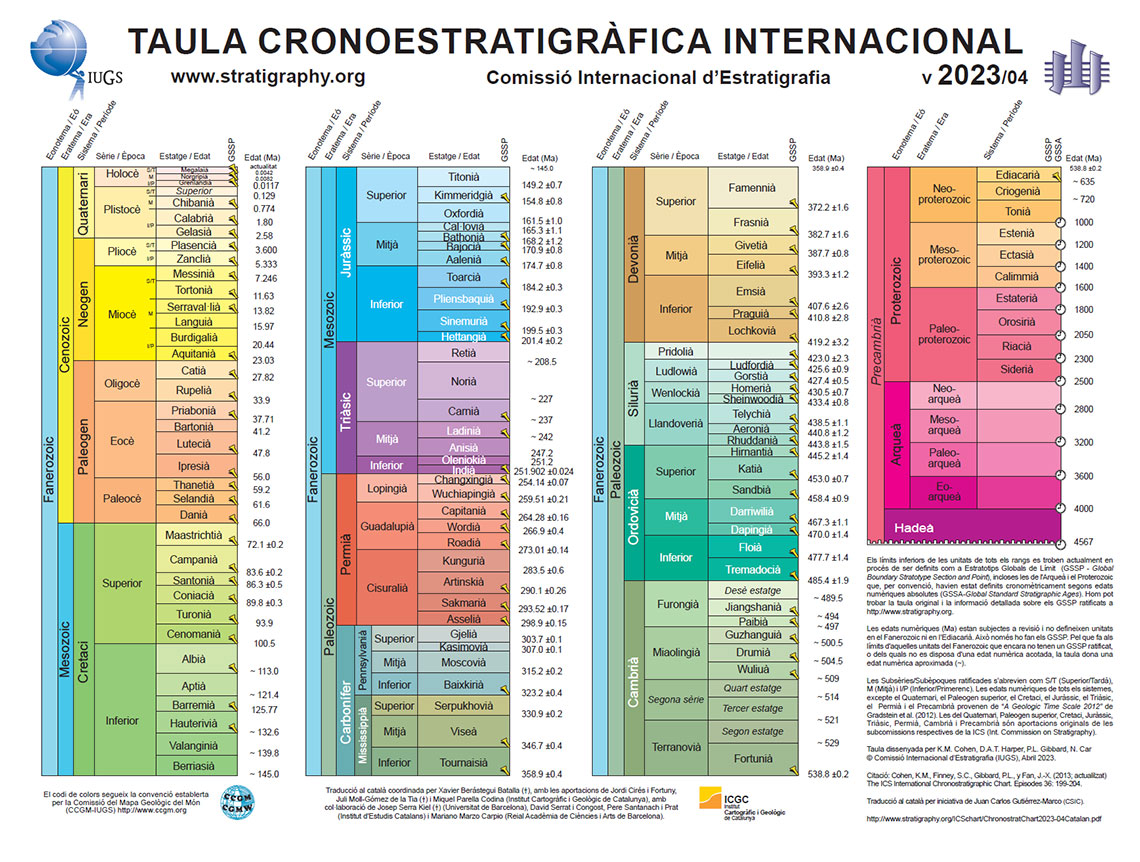
Time chart designed by K.M. Cohen, D.A.T. Harper, P. L. Gibbard, N. Car. © International Commission on Stratigraphy (IUGS, 2023). Download the latest version of the International Chronostratigraphic Table in Catalan (v2023/04).
Foreword
The International Chronostratigraphic Chart describes the geological time in which the history of the Earth is inscribed. It combines a numerical scale that uses as a unit a million years (chronometric scale) and a scale in relative time units (chronostratigraphic scale).
The chronostratigraphic scale is established by convention and is based on the International Standardized System of stratigraphical units (e.g., "Jurassic", "Paleocene" or "Hildoceras bifrons ammonite zone"). This system, regulated by the International Commission on Stratigraphy (ICS), describes the relative divisions of geological time (eons, eras and their sub-divisions), establishes the limits of the units and calibrates them with the chronometric scale, attributing to them the corresponding absolute ages.
The lower boundaries of all units (stages, series, systems and erathems) are currently in the process of being defined by means of sections and points, as Global Stratotype Section and Boundary Point (GSSP).
The Archean and the Proterozoic, which by convention were chronometrically defined as absolute numerical ages (Global Standard Stratigraphic Age - GSSA), are involved in this process.
Official GSSP are marked in the table with the Golden Spike symbol, which is also placed on the ground. You can find the original table and the details of the ratified GSSP (criteria to define each one of them, geographic and geological location, correlation, etc.) at http://www.stratigraphy.org.
Numerical ages (Ma) of the unit boundaries in the Phanerozoic and the Ediacaran are subject to revision and do not define units. This will be made only by the GSSP. Regarding the limits of the Phanerozoic units that do not yet have an agreed GSSP, or the ones without a precise numerical age, the table provides an approximate numerical age (~).
- Numerical ages of all systems, except Triassic, Cretaceous and Precambrian, come from Gradstein et al. (A Geologic Time Scale 2012).
- Numerical ages of the lower Pleistocene, Triassic and Cretaceous are original contributions of the respective subcomissions of the ICS-IUGS.
Colour code is according to the Commission for the Geological Map of the Word (CCGM-IUGS).

 Contact
Contact








